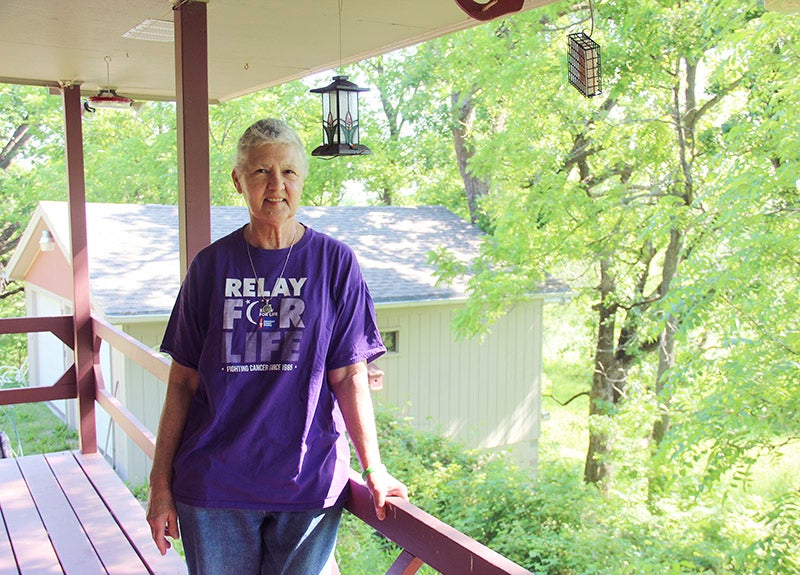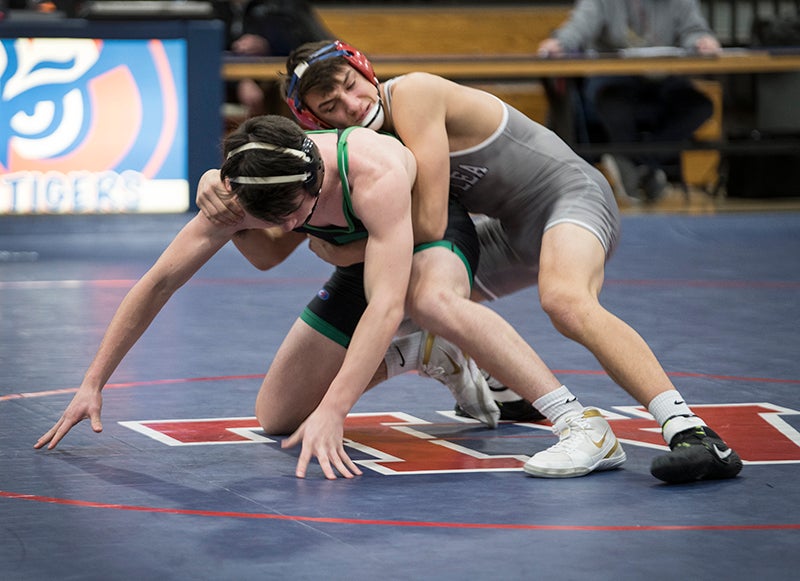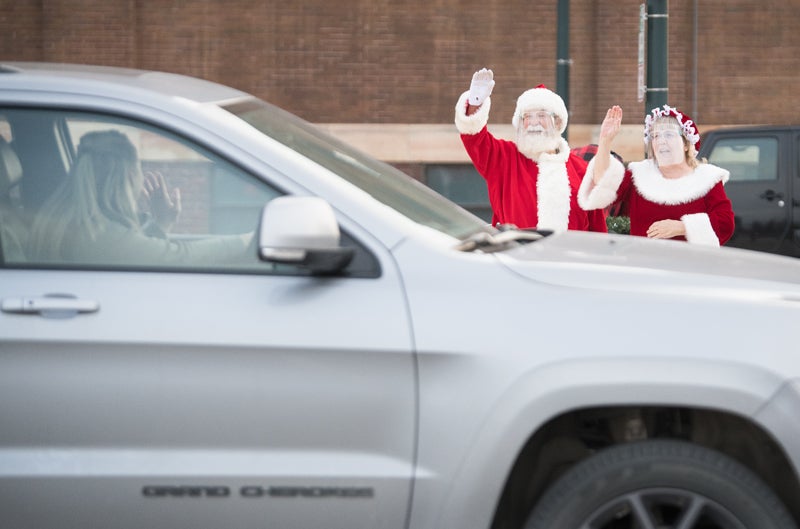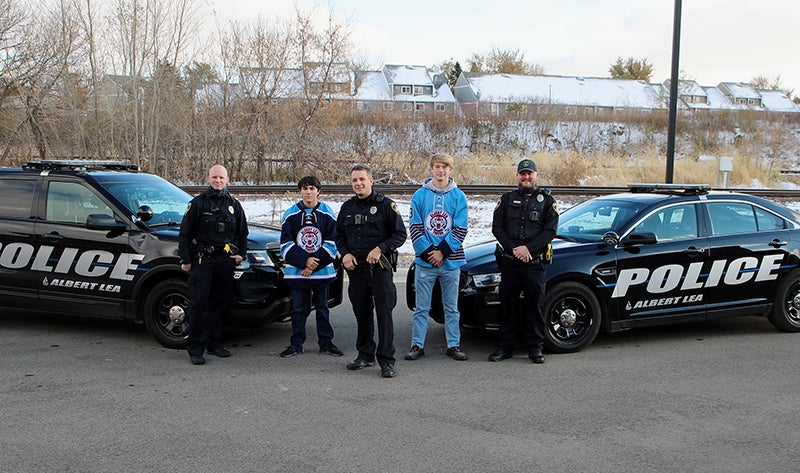‘It was an experience I won’t forget’
Published 12:06 am Friday, November 10, 2017
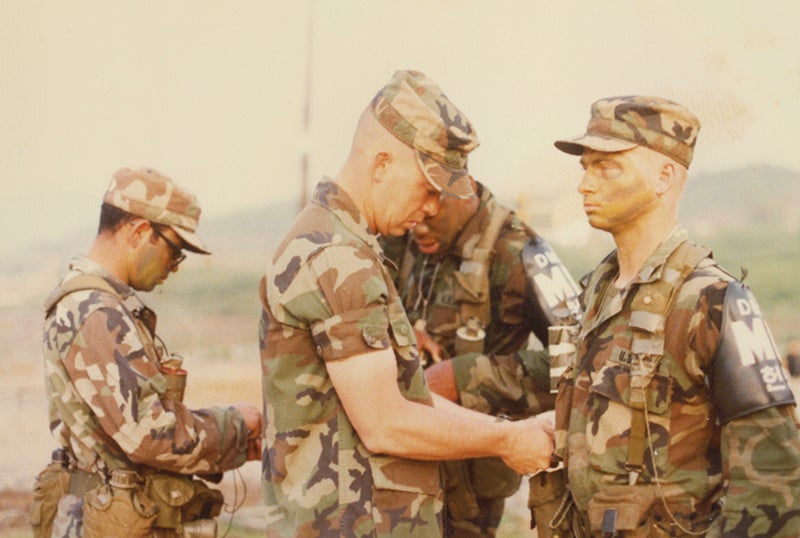
- Albert Lea resident and Walters native Troy Ranum — pictured on the right while serving along the border between North and South Korea in the 1980s — served with the United States Army, National Guard and Air Force Reserves during his 26-year military career. - Provided
Area veterans share their experiences serving the U.S.
In honor of Veterans Day, the Tribune sat down with a few area veterans to talk about their experiences while serving in the military. A video will go up Saturday on albertleatribune.com with parts of some of the interviews included.
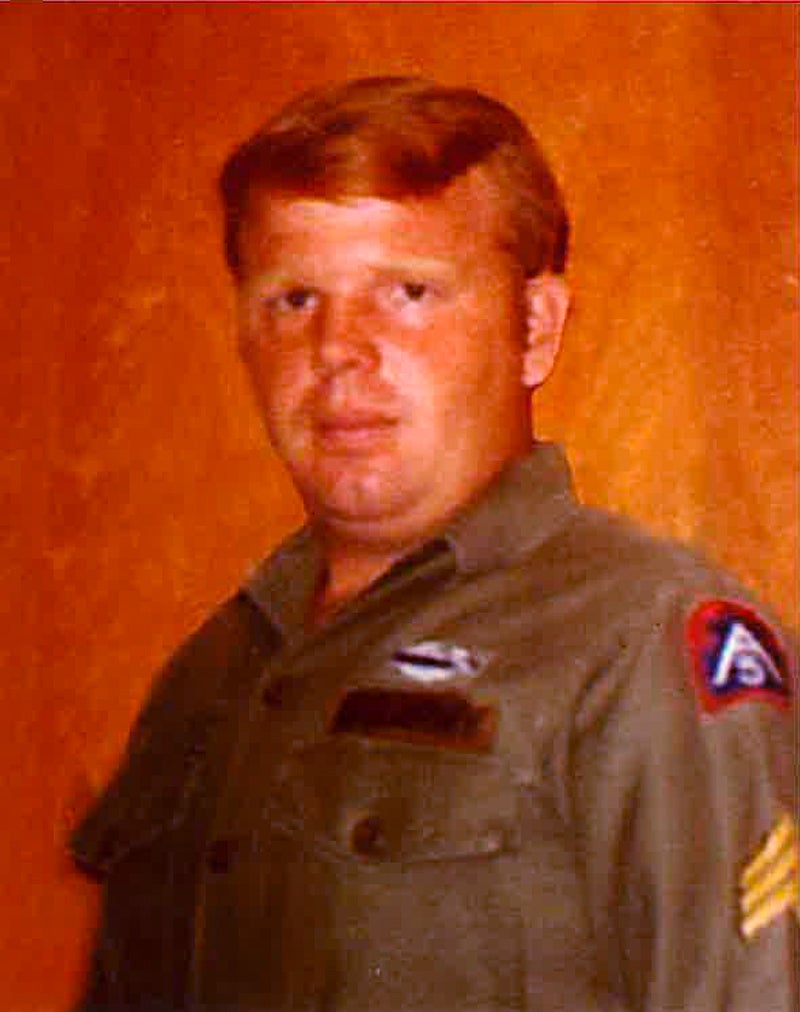
Emmons native and Purple Heart recipient Al Larson served with the Army during the Vietnam War. – Provided
‘An experience I won’t forget’
At the age of 19, Emmons native Al Larson was drafted into the United States Army. It was 1967, well into the escalation of U.S. involvement in the Vietnam War.
Larson went over to Vietnam in 1968. Getting off the plane in Cam Ranh Bay, Larson said he was hit with the smell of diesel and burning waste — he said many Vietnamese would take any human waste they could find to use with incendiary devices or other kinds of traps. U.S. soldiers burned their waste in order to keep them from doing so.
“It (didn’t) take long to get used to it,” Larson said of the smell.
He said being over in Vietnam was the first time he had been exposed to poverty, and being there made him feel like such a small part of everything going on. People begged in the streets and for many, that was the only way they’d be able to eat.
“You talk about third-world countries — you’re dumped into one,” he said.
“It takes on your whole life,” he said. “Once you’re there, you kind of forget about home.”
As part of the ninth division stationed in one of the southern-most areas of Vietnam near Mekong Delta, Larson said he was wading in and out of waste-deep water just about every day on his missions. He worked largely with what he called the mortar division — going on search and destroy missions while mainly using mortars and rifles. He said the days often felt long and boring, as almost all of their reconnaissance missions were done at night.
Larson said he felt like he was in two different armies during the Vietnam War era — the one in the States where he had clean fatigues to wear and things were more civilized, and the one in Vietnam, where there wasn’t as much rigid discipline or cleanliness as everyone was always out in the field.
Being in the southern part of Vietnam, Larson said U.S. soldiers felt a bit of a disadvantage compared to those stationed up north. They weren’t fighting uniformed soldiers, but people in plain clothes. Everyone and everything looked the same, so it was hard to know who to trust.
“They were trying to kill you and you were trying to kill them,” he said. “That’s just the way it was.”
It was definitely hard to see people near him being killed, Larson said, but there was so much going on so quickly that he never got a chance to become close to anyone he served with in Vietnam. Casualties became a part of life during his time there.
“It’s kind of like you get used to death after a while,” he said.
“It was an experience I won’t forget.”
Larson’s time in Vietnam got cut short after about 3 1/2 months, after which he had to leave the country via medevac. Larson was going along a dike with his fellow soldiers when they set off a tripwire, sending shrapnel their way and catching sniper fire from Vietnamese soldiers lying in wait. Larson got hit with the shrapnel from the waist down, sending him into the water, where he then caught sniper fire.
“The water’s getting red, and you don’t know if it’s good, bad or ugly,” he said.
Larson — now a Purple Heart recipient due to his wounds, stayed in a Vietnam hospital for about two weeks, before going to a Tokyo hospital for about a month. From there he got leave to go back to Emmons for another month. After recuperating Larson went to Fort Leonard Wood in Missouri, where he finished the remainder of his service time training others. To this day, he doesn’t have as much feeling from his left knee down due to nerve damage from his wounds sustained in Vietnam.
Larson got married about two weeks before going over to Vietnam, and he and his wife, Linda, have now been married 49 years. They have two daughters and six grandsons.
Larson went to what is now Riverland Community College on the GI Bill, and eventually started his own business, Larson Contracting, out of Lake Mills and Albert Lea. He ran it for almost 40 years before selling it in 2010 upon his retirement.
While serving wasn’t initially part of his plans at the age of 19, Larson said he did what he had to do at the time.
“It probably wouldn’t have been my first thing to do, to go enlist,” he said. “You can’t describe the bad feelings you get when you know you’re going to Vietnam, but you can’t describe the good feelings you get when you come back. ‘You’re done now, you don’t have to go twice.’”
Larson, now 68, said his time serving matured him, gave him confidence and helped prepare him for the rest of his life.
“You could drop me in Alabama at 2 o’clock in the morning and I’d figure out something,” he said. “It gave you the ability not to be afraid of anything or anybody.”
“You know what you can do. … You can figure things out.”
Larson talked modestly about his service, and said he didn’t want others to think he was bragging about his time with the military.
“You did what you were supposed to do,” he said. “You don’t need to be thanked for everything.”
“The real, real heroes are the World War II guys,” he said. “Not just the military — everybody sacrificed in World War II.”
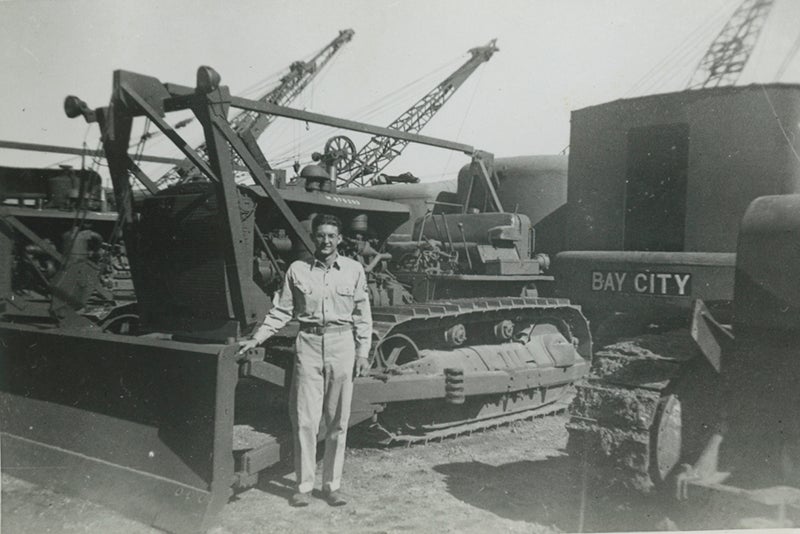
Chuck Kozelsky served with the United States Army Corps of Engineers during World War II. – Provided
‘I was ready to go’
After three deferments, Chuck Kozelsky was drafted into the Army in 1941 at the age of 21. As World War II escalated, Kozelsky was working in a Chicago factory making dental plates for soldiers — a job that led to his deferments. His boss wanted him to get a fourth deferment, but Kozelsky felt it was his time to go.
“There’s nobody (else) around,” he said. “I was pretty happy to go and I was ready to go.”
Kozelsky went through training in Illinois, before going to Missouri’s Fort Leonard Wood, where he was placed in the Army Corps of Engineers. He went to auto mechanic training in Nebraska’s Fort Crook, before transferring to Camp Sutton in North Carolina for additional training. There he learned how to build bridges, as well as blow them up, Kozelsky said.
Just before D-Day’s Normandy landings in 1944, Kozelsky boarded a ship off the coast of Oregon. He said he waited on that ship for days, waiting to hear how the invasion would go, which would ultimately decide his destination. Should the Allies invasion go poorly, more troops would be sent to France. Since the troops were able to grab a foothold on the beach, Kozelsky and the liberty ship he was on headed for the South Pacific.
There was no convoy accompanying the ship, and its protection consisted of two 5-inch guns managed by a rotating gun crew — one at the back and one at the front of the ship.
“That’s when we got a bit scared,” he said. “If we’d run into something heavy from the Japanese, we were dead.”
Luckily Kozelsky and his shipmates made it to New Caledonia without incident, where they dropped off cargo before heading on to the New Hebrides islands and their final destination while overseas — Guadalcanal.
While in Guadalcanal, it was the Corps of Engineers’ jobs to fix, maintain or replace equipment for troops in combat. Kozelsky said they worked on everything from tractors and generators to cranes and trucks. He said that was his job every day until the end of the war. After atomic bombs were dropped on Hiroshima and Nagasaki, Japan, on Aug. 6 and 9 of 1945, respectively, Kozelsky said the engineers waited some time before they were able to come back to the States. Soldiers were sent back on a point system — with combat duties typically being the source of points — so Kozelsky not being in combat meant he had lower points, putting him near the end of the line waiting to go home.
Kozelsky would eventually be discharged on March 1, 1946, and would go back home to Illinois, where he’d stay for decades. He and his wife had two sons, and Kozelsky moved to Albert Lea about three years ago to be closer to his family that has relocated to the area.
Now 95, Kozelsky went on an honor flight to Washington, D.C., at the end of September. He got to tour different monuments and veterans memorials around the Capitol and was honored with ceremony and welcomed at the airport.
Kozelsky has regaled his grandchildren with stories over the years from his time serving — one of their favorites being the time he and fellow soldiers had to eat bread with bugs cooked into it, as there wasn’t any other option. His time in the service helped him to grow up and see things differently.
“It’s a pretty good life,” he said. “You find out what life is all about.
“I have no complaints.”

Albert Lea resident and Walters native Troy Ranum — pictured on the right while serving along the border between North and South Korea in the 1980s — served with the United States Army, National Guard and Air Force Reserves during his 26-year military career. – Provided
‘Life was way different’
Troy Ranum knew he’d be serving in the military before he had finished high school.
The Walters native joined up with the Army nine days after graduating, heading to Fort Knox in Kentucky for basic training.
“It seemed like the best option at the time,” Ranum said.
Eventually Ranum was sent to patrol the border between North and South Korea, where he’d remain from 1982 to 1983. He was to observe the North Korean side for anything suspicious, and at one point was given instructions to keep an eye out for Pfc. Joseph White — a soldier who defected to North Korea in 1982. Ranum said at one point his unit was given permission to either take White out or cross the border to bring him back if they ever caught sight of him. White’s original unit eventually came back to replace Ranum’s on border patrol duty.
Being from a small town in Minnesota, Ranum said being in South Korea was completely new to him, and called it “a learning experience.”
“Life was way different,” he said.
When troops would shoot off their blank rounds left over from field exercises, Ranum said “Koreans would come out of the woodwork” to collect the brass from the rounds.
“They knew exactly where we were at all times,” he said.
Upon his return to the U.S., Ranum spent the rest of his time in the Army at Fort Bliss in Texas. He met his wife, Marcia, about six months before his enlistment ran out, so he returned to Minnesota when his four years with the Army were finished.
Ranum still continued his military career, though, signing up with the National Guard out of Austin within two weeks of being back in Minnesota. He stayed with the National Guard for about a year, with some of that time spent at Camp Ripley, before joining the Air Force Reserves based out of the Twin Cities.
A self-employed carpenter by that time, Ranum did similar work for the Reserves — maintaining base camps and runways. He served with the Reserves for about 20 years, retiring in 2007 after being deployed voluntarily to Iraq in 2007. Over those 20 years, Ranum went all over the world — from Saudi Arabia, the United Arab Emirates and Turkey, to Germany, Spain and Panama, with other places in between.
Ranum, 53, now does carpentry work for the Veterans Administration Hospital in the Twin Cities. He and his wife have two children, and both Troy and Marcia Ranum are active with the Albert Lea American Legion. Troy Ranum is also a member of the Albert Lea Veterans of Foreign Wars and the Air Force Sergeants Association.
Ranum said his time serving taught him discipline, and a greater respect for both the military and being able to live in the U.S. as a whole.
“I think everyone should serve,” he said.
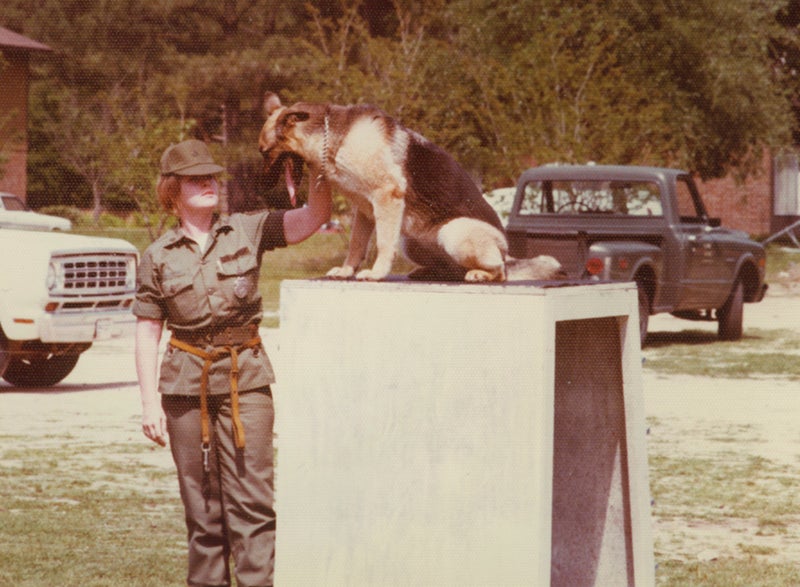
Marlene Johnson Strehlow of Albert Lea was a narcotics K-9 handler for the Army in the ’70s. – Provided
‘I just always wanted to’
Albert Lea native Marlene Johnson Strehlow had an aunt who served in the Women’s Army Corps during World War II she looked up to as a child, as well as an uncle who flew bombers.
“I just always wanted to,” she said about enlisting. “When you know what you want, sometimes you only have one chance.”
Strehlow said she didn’t want to regret not taking that chance, so she enlisted in the Women’s Army Corps in 1977 at the age of 22.
She started training in Alabama’s Fort McClellan with the last group who enlisted in the Women’s Army Corps, so Strehlow was eventually moved into the Army itself. She went to military police training in Alabama, and upon graduation was selected for training with K-9 units. For her training with K-9s she went to Lackland Air Force Base in Texas, where she started working with patrol dogs.
“I love it, I absolutely loved it,” she said.
Strehlow then went to Fort Benning in Georgia, where she used K-9s to guard redeye missiles. She gradually started helping narcotics squads with road blocks, before being selected to head back to Lackland AFB to start training as a narcotics K-9 handler.
Training with K-9s meant Strehlow was working with almost all of the military branches, which she enjoyed. She said it was interesting seeing just how invaluable the dogs were to the military — going so far as to shut down a base and bring in helicopters to search for one dog when it had gotten out.
During her time in the service, Strehlow said she didn’t run into any problems stemming from her being a woman serving and working with mostly men.
“When you know your job well and have a 90-pound dog next to you, people don’t argue with you,” she said.
“When you’re in the service, everyone relates to everybody. They really pull together.”
Strehlow said 99 percent of the dogs used were German shepherds, as that breed seemed to be the most adept at the assigned duties while also being adaptable to different environments.
At the end of her three-year enlistment, Strehlow decided to get out of the Army. She said she was interested in traveling, and couldn’t be guaranteed an overseas assignment at that point in time.
Strehlow came back to Albert Lea after her service, and eventually got married. Now 62, she has three children and one grandchild. She worked for pathologists at Mayo Clinic Health System in Albert Lea for almost 20 years.
An annual attendant of local Veterans Day services, Strehlow said her time serving was “a growing experience,” and she thinks it’s something everyone should do. She looks back on her time with the Army fondly, and has no regrets about her choice to enlist.
“It teaches a person very clearly the difference between what you need and what you want,” she said. “It’s amazing when you find out there are things you never thought you could do.”



